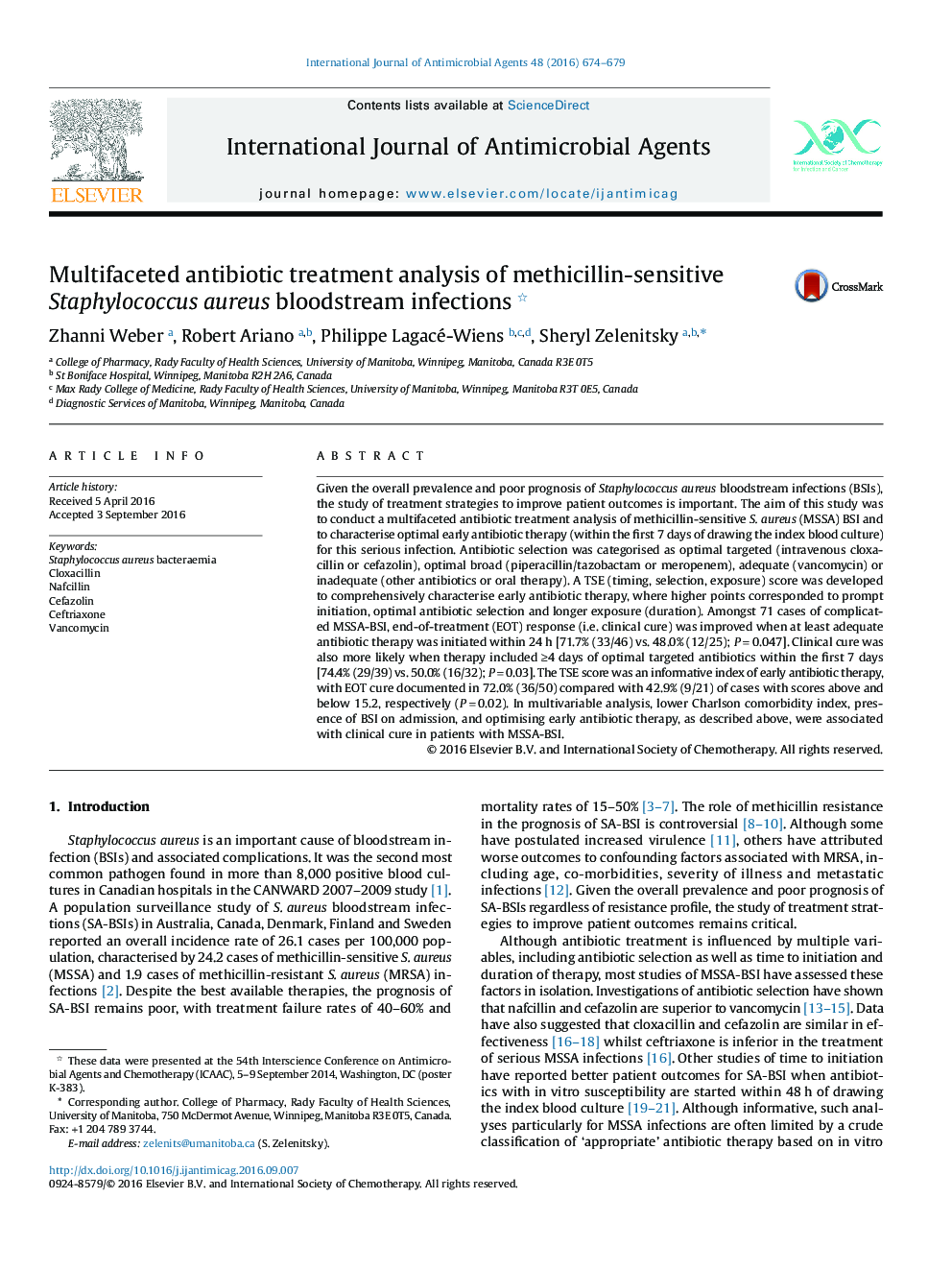| کد مقاله | کد نشریه | سال انتشار | مقاله انگلیسی | نسخه تمام متن |
|---|---|---|---|---|
| 5666860 | 1591748 | 2016 | 6 صفحه PDF | دانلود رایگان |

- Multifaceted treatment analysis of methicillin-sensitive Staphylococcus aureus bloodstream infections.
- Higher clinical cure rates were observed when at least adequate antibiotic therapy was initiated within 24âh.
- TSE score was developed to characterise early antibiotic therapy significantly associated with patient outcomes.
Given the overall prevalence and poor prognosis of Staphylococcus aureus bloodstream infections (BSIs), the study of treatment strategies to improve patient outcomes is important. The aim of this study was to conduct a multifaceted antibiotic treatment analysis of methicillin-sensitive S.âaureus (MSSA) BSI and to characterise optimal early antibiotic therapy (within the first 7 days of drawing the index blood culture) for this serious infection. Antibiotic selection was categorised as optimal targeted (intravenous cloxacillin or cefazolin), optimal broad (piperacillin/tazobactam or meropenem), adequate (vancomycin) or inadequate (other antibiotics or oral therapy). A TSE (timing, selection, exposure) score was developed to comprehensively characterise early antibiotic therapy, where higher points corresponded to prompt initiation, optimal antibiotic selection and longer exposure (duration). Amongst 71 cases of complicated MSSA-BSI, end-of-treatment (EOT) response (i.e. clinical cure) was improved when at least adequate antibiotic therapy was initiated within 24âh [71.7% (33/46) vs. 48.0% (12/25); Pâ=â0.047]. Clinical cure was also more likely when therapy included â¥4 days of optimal targeted antibiotics within the first 7 days [74.4% (29/39) vs. 50.0% (16/32); Pâ=â0.03]. The TSE score was an informative index of early antibiotic therapy, with EOT cure documented in 72.0% (36/50) compared with 42.9% (9/21) of cases with scores above and below 15.2, respectively (Pâ=â0.02). In multivariable analysis, lower Charlson comorbidity index, presence of BSI on admission, and optimising early antibiotic therapy, as described above, were associated with clinical cure in patients with MSSA-BSI.
Journal: International Journal of Antimicrobial Agents - Volume 48, Issue 6, December 2016, Pages 674-679